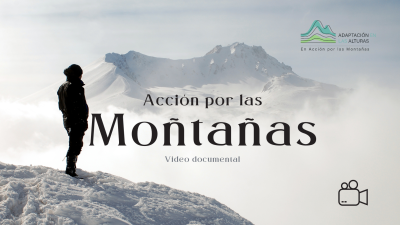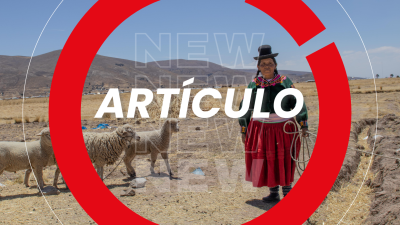Worldwide, forest fires affect approximately 370 million hectares annually (Giglio et al. 2010, FAO 2016, Bond and Keane 2017). Forest fires are a present and growing threat, and most affect southern countries in terms of severity and impacts. They have become a major threat for Andean forests, especially considering their fragmented condition and patchy distribution.

@Andina
A proportion of these forest fires are due to natural factors that are part of forest evolution. However, they have increased exponentially due to climate change. The combination of prolonged heat waves, cumulative droughts and low humidity coupled with very dry vegetation is leading to much faster fires (WWF, 2020).
In Andean countries, forest fires are mostly caused by human activities. The burning of natural forests and grasslands is due to changes in land use, pressures on the forest to expand the livestock and agricultural frontier, timber extraction for firewood and charcoal, burning to encourage the regrowth of pastures, and plantations of exotic forest species. In the Andes, the strong winds turn burns into large fires. A small ember can generate very large-scale fires. Burning in forests and grasslands is therefore not a recommended practice, as it jeopardises forest life, the health and integrity of local communities and biodiversity, and can end in tragedy for all involved.
Forest fires and climate change create a vicious circle. As the fires increase, so do green-house gas emissions. The temperature of the planet rises and the succession of extreme weather events increase (WWF, 2020).
The use of fire is not new and is said to be an ancestral practice. The Kiuñalla and Ccerabamba communities determined that the main cause of forest fires is the “chajo“, the practice they use to expand their areas for crop farming. The communities cut back the existing shrub and tree vegetation and then burn it when the cut vegetation is dry. The burn should be controlled, but in some cases, because of strong winds or simply the carelessness of community members, the fire spreads beyond the area cut back and can burn large areas of natural grasses or forests, generally in the dry season (Huasasquiche, J. and Kómetter, R., 2018).

@La República Newspaper
At the Apurímac site, SDC has gathered testimonies that speak of the communities’ changing attitude towards their own resources. The value that the communities place on forests and natural ecosystems for maintaining water resources is especially evident. When SDC consulted the community authorities about the impact of the Programme’s activities, they stressed the techniques they have learned for reforesting with native plants and forest restoration (nucleation), and that they have become aware of conservation and forest fire prevention. The latter is the result of coordination between the Andean Forests Programme’s local partner CEDES Apurímac, the peasant farmer communities and local governments.
Forest fires also affect Andean forests as follows:
- Biomass is converted into carbon dioxide and other pollution that move into the atmosphere, aggravating global warming.
- Irreparable damage is done to forest ecosystems, soils lose most of their micro-fauna and can take about 10 years to be restored.
- Desertification of the landscape.
- Decrease in the availability of water resources.
- Public health crisis due to people breathing in harmful levels of pollutants.
- Economic losses due to destruction of property.
Prevention
The Andean Forests Programme has worked with communities, organisations and local institutions to formulate protocols for organised forest fire prevention and control through:
- Disseminating information and raising awareness in communities, schools and universities.
- Training and organisation programmes for the community and local governments to formulate control and prevention regulations and protocols for action in the event of a forest fire.
- Creating fire control committees and brigades in the community with the appropriate equipment and protocols.
This action can be scalable to other countries and other communities in the region for adequate and participatory forest fire prevention and control management.
Forests are the main means we have to combat climate change, which is why their sustained decline affects us all. Protect them!
Civil and non-civil society groups, such as the Kiuñalla community, together with groups of men and women volunteer fire-fighters from these Andean villages have organised, and to date have coordinated their response to recent forest fires. Strengthening capacities, disseminating information and providing appropriate equipment and tools has been key to this and is essential for mitigation and effective prevention, safety and health care.
Source: Andean Forests
Resources:
Video on forest fire management
Video of the Experience Exchange webinar on forest fire prevention and management
Useful links:
Factsheet Andean Forests Programme Factsheet (spa)
Web Andean Forests website








